Ultra Low Light Security Cameras
Ultra-low light security cameras, often referred to as "starlight cameras," are designed to provide high-quality video surveillance in extremely low-light conditions, including near-total darkness. These cameras use advanced technologies to capture and record images with minimal available light.
These cameras are ideal for applications where traditional security cameras might struggle to provide usable footage, such as outdoor surveillance in rural areas, low-light indoor environments, or locations with minimal lighting infrastructure. Ultra-low light cameras offer extended surveillance capabilities in challenging light conditions and can be especially valuable for 24/7 security and monitoring.
Key features of Ultra Low Light Security Cameras
- Exceptional Low-Light Sensitivity: Ultra-low light cameras are equipped with highly sensitive image sensors, such as back-illuminated CMOS sensors, that can capture usable images with just a faint amount of ambient light.
- Color Imaging in Near Darkness: A defining feature of these cameras is their ability to produce color images in conditions where traditional cameras would only provide black and white or no image at all.
- Large Aperture Lenses: They often feature lenses with wide apertures (low f-numbers), allowing more light to enter and improving their low-light performance.
- Digital Noise Reduction (DNR): DNR technology is used to minimize noise and graininess in low-light images, enhancing the clarity of the video.
- Wide Dynamic Range (WDR): Some models incorporate WDR technology to handle scenes with strong contrasts between light and dark areas, ensuring that details in both areas are captured effectively.
- Day/Night Functionality: Ultra-low light cameras often feature an IR-cut filter for accurate color representation during the day and can switch to infrared mode at night if needed.
- Intelligent Infrared (IR) Illumination: Some models use intelligent IR illumination to provide optimal lighting conditions for night vision without overexposing or underexposing the image.
- Frame Integration: Ultra-low light cameras may use frame integration techniques to accumulate light over multiple frames, improving image quality in extremely low-light conditions.
-
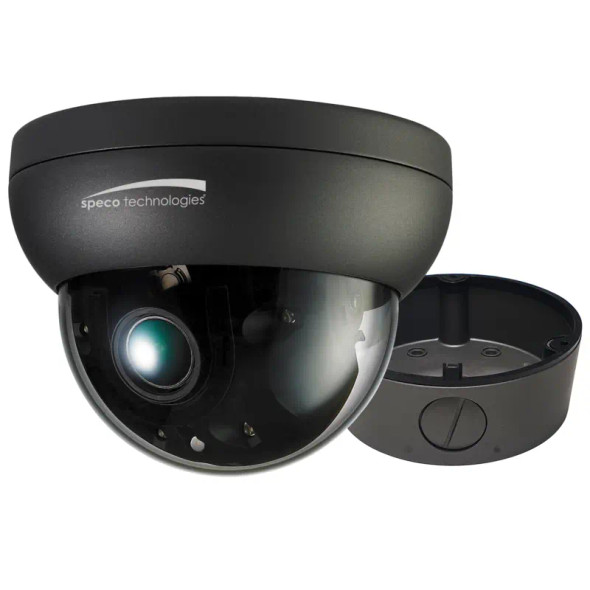
Speco HT7246T1 2MP Outdoor Dome HD-TVI Security Camera with Junction Box
Brand: Speco
Part Number: HT7246T1$190.86- Max. FPS and Resolution : 30fps at 1080P
- Lens Type : Motorized (Automatic Zoom) Lens
- Lens Size : 2.8~12mm Lens
- Sensor Type : CMOS
- Sensor Size : 1/2.9" Sensor
- Video Output : 1x CVBS
- Protection Code : IP67
- Color : Dark Gray
- Environmental : Outdoor
$190.86 -
Top DealsDeal Ends: 08/31Deal Ends: 09/30

Vivotek MA9322-EHTVL 4x 5MP Night Vision Outdoor Multi-sensor IP Security Camera with Motorized Lens
Brand: Vivotek
Part Number: MA9322-EHTVL$2,700.00$1,370.89- Compression : H.265, H.264, MJPEG,
- Field of View (Horizontal) : 88.6°Field of View 40.1°Field of View
- Max. FPS and Resolution : 30fps at 2560 x 1440 12fps at 2688 x 1920
- Lens Type : Motorized (Automatic Zoom) Lens
- Lens Size : 3.7~7.7mm Lens
- Sensor Type : CMOS
- Sensor Size : 1/2.7" Sensor
- Protection Code : IP66 IK10 NEMA 4X
- Color : White
- Environmental : Outdoor
- Aperture : F1.9 F2.9
- Audio Support : Built-in Microphone External Microphone
$2,700.00$1,370.89 -
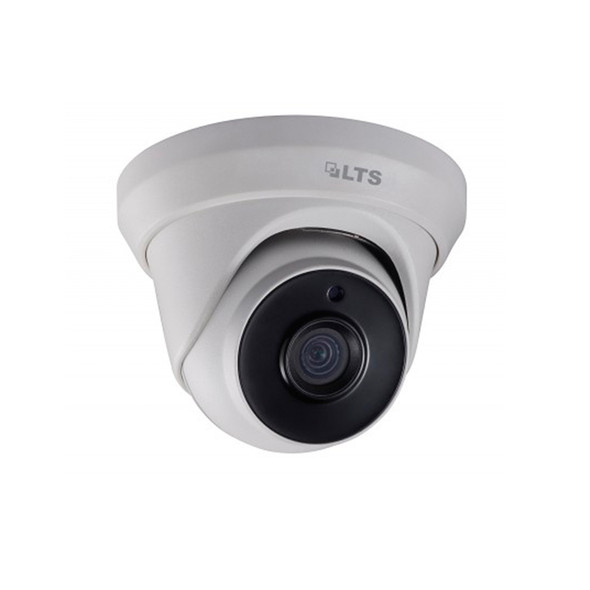
LTS CMHT1722WE-28F 2MP IR Ultra-Low Light Outdoor Turret HD-CCTV Security Camera - LTCMHT1722WE-28F
Brand: LTS Security
Part Number: LTCMHT1722WE-28F$70.03- Field of View (Horizontal) : 104°Field of View
- Lens Type : Fixed Lens
- Lens Size : 2.8mm Lens
- Sensor Type : CMOS
- Protection Code : IP67
- Environmental : Outdoor
$70.03 -
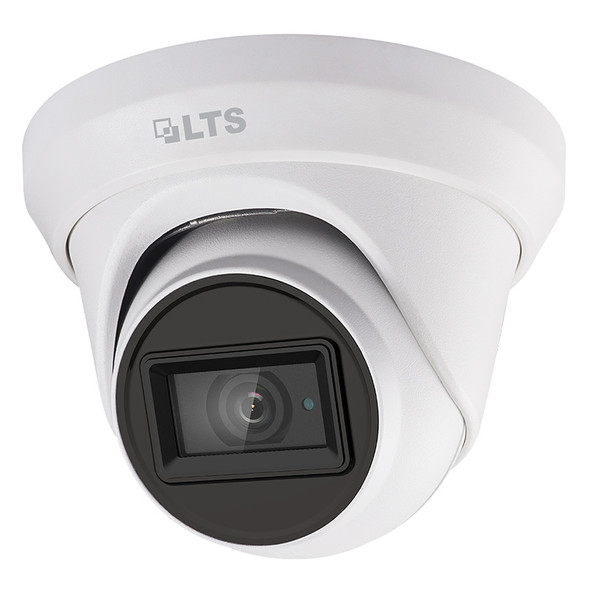
LTS CMHT1752WE-28F 5 MP IR Ultra-low-light Turret HD-TVI Security Camera - LTCMHT1752WE-28F
Brand: LTS Security
Part Number: LTCMHT1752WE-28F$94.07- Field of View (Horizontal) : 98°Field of View
- Lens Type : Fixed Lens
- Lens Size : 2.8mm Lens
- Sensor Type : CMOS
- Protection Code : IP67
- Environmental : Outdoor
$94.07 -

Geovision 84-TFD480W-0010 4MP Night Vision Indoor Dome IP Security Camera with 2.8mm Fixed Lens - 84-TFD480W-0010
Brand: Geovision
Part Number: 84-TFD480W-0010$228.57- Compression : H.265, H.264, MJPEG,
- Field of View (Horizontal) : 101.1°Field of View
- Max. FPS and Resolution : 30fps at 2688 x 1520
- Lens Type : Fixed Lens
- Lens Size : 2.8mm Lens
- Sensor Type : CMOS
- Sensor Size : 1/2.7" Sensor
- Color : White
- Environmental : Indoor
- Aperture : F1.6
- Audio Support : Built-in Microphone
$228.57 -

Geovision GV-TDR4803-2F 4MP Night Vision Outdoor Dome IP Security Camera with AI Deep Learning, 2.8mm Fixed Lens - 84-TDR483W-2F10
Brand: Geovision
Part Number: 84-TDR483W-2F10$166.64- Compression : H.265, H.264, MJPEG,
- Field of View (Horizontal) : 101°Field of View
- Max. FPS and Resolution : 30fps at 2688 x 1520
- Lens Type : Fixed Lens
- Lens Size : 2.8mm Lens
- Sensor Type : CMOS
- Sensor Size : 1/3" Sensor
- Protection Code : IP67 IK10
- Color : White
- Environmental : Outdoor
- Aperture : F1.6
$166.64 -
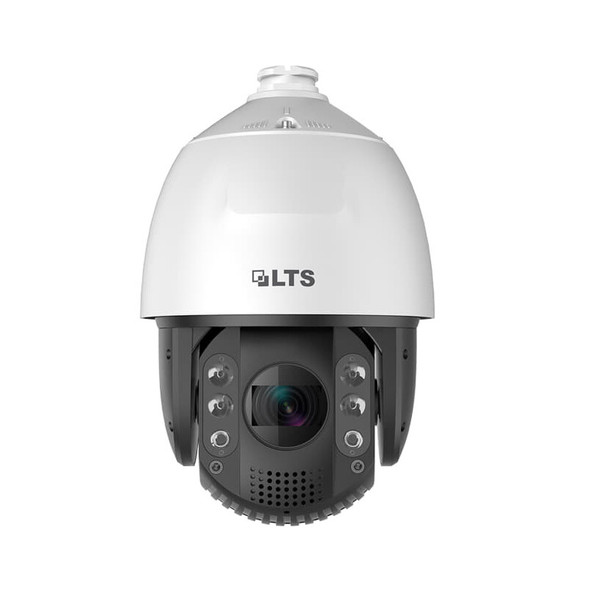
LTS PTZIP772NW-X32IR 2MP Night Vision Outdoor PTZ IP Security Camera with 32x Optical Zoom - LTPTZIP772NW-X32IR
Brand: LTS Security
Part Number: LTPTZIP772NW-X32IR$797.95- Compression : H.265, H.264, H.265 Plus, H.264 Plus, MJPEG,
- Field of View (Horizontal) : 2.6°Field of View 50.8°Field of View
- Max. FPS and Resolution : 30fps at 1080P
- Lens Type : Motorized (Automatic Zoom) Lens
- Lens Size : 4.8~153mm Lens
- Sensor Type : CMOS
- Sensor Size : 1/2.8" Sensor
- Protection Code : IP66 IK10
- Material : ADC12
- Environmental : Outdoor
- Aperture : F1.6
- Audio Support : Built-in Speaker
$797.95 -
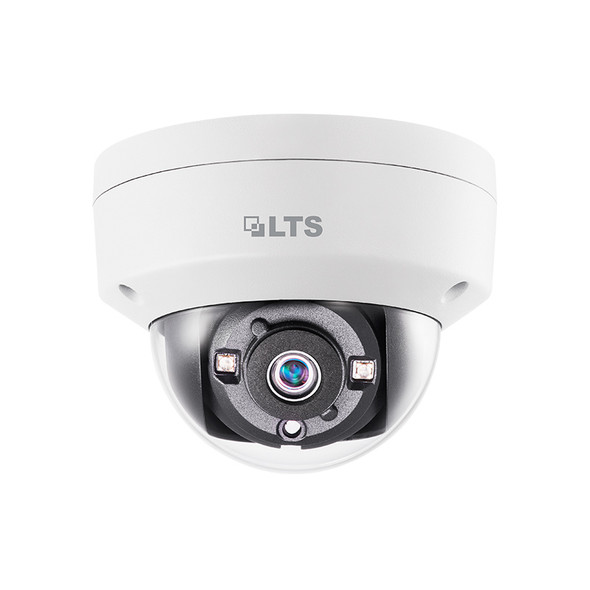
LTS CMHD7352WE-28F 5MP IR Ultra Low Light Outdoor Dome Hd-TVI Security Camera - LTCMHD7352WE-28F
Brand: LTS Security
Part Number: LTCMHD7352WE-28F$94.07- Field of View (Horizontal) : 98°Field of View
- Max. FPS and Resolution : 20fps at 2560 x 1944
- Lens Type : Fixed Lens
- Lens Size : 2.8mm Lens
- Protection Code : IP67 IK10
- Color : White
- Environmental : Outdoor
$94.07 -

AXIS M1135-E Mk II 2MP Outdoor Box IP Security Camera with 3.5x Optical Zoom - 02485-001
Brand: AXIS
Part Number: 02485-001$616.60- Compression : H.264, H.265, MJPEG,
- Field of View (Horizontal) : 33°Field of View 90°Field of View
- Max. FPS and Resolution : 30fps at 1080P
- Lens Type : Motorized (Automatic Zoom) Lens
- Lens Size : 3~10.5mm Lens
- Sensor Type : CMOS
- Sensor Size : 1/2.9" Sensor
- Protection Code : IP66 NEMA 4X IK10
- Color : White
- Environmental : Outdoor Indoor
- Aperture : F1.4
- IR Corrected : IR Corrected
$616.60 -

LTS LTPTZIP424W-X25IR 4MP Night Vision Outdoor PTZ IP Security Camera, 25x Optical Zoom
Brand: LTS Security
Part Number: LTPTZIP424W-X25IR$643.17- Compression : H.265, H.265 Plus, H.264, H.264 Plus, MJPEG,
- Field of View (Horizontal) : 53.3°Field of View 2.6°Field of View
- Max. FPS and Resolution : 30fps at 2560 x 1440
- Lens Type : Motorized (Automatic Zoom) Lens
- Lens Size : 4.8~120mm Lens
- Sensor Type : CMOS
- Sensor Size : 1/2.8" Sensor
- Protection Code : IP66
- Color : White
- Environmental : Outdoor
- Aperture : F1.6
$643.17 -
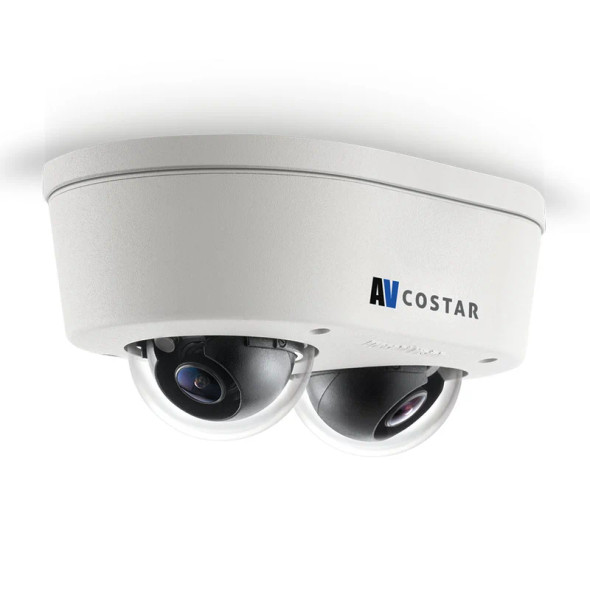
Arecont Vision AV10956DN-28 2x5MP Outdoor Multi-Sensor IP Security Camera with SNAPstream+, 2.8mm Fixed Lens
Brand: Arecont Vision
Part Number: AV10956DN-28$1,260.00$781.42- Compression : H.265, H.264, MJPEG, MPEG4,
- Field of View (Horizontal) : 98°Field of View
- Lens Type : Fixed Lens
- Lens Size : 2.8mm Lens
- Sensor Type : CMOS
- Sensor Size : 1/2.8" Sensor
- Max. Storage Capacity : 1 TB Storage Capacity
- Protection Code : IP66 IK10
- Color : White
- Material : Aluminum Poly-carbonate (PC)
- Environmental : Outdoor Indoor
- Aperture : F2.0
$1,260.00$781.42 -
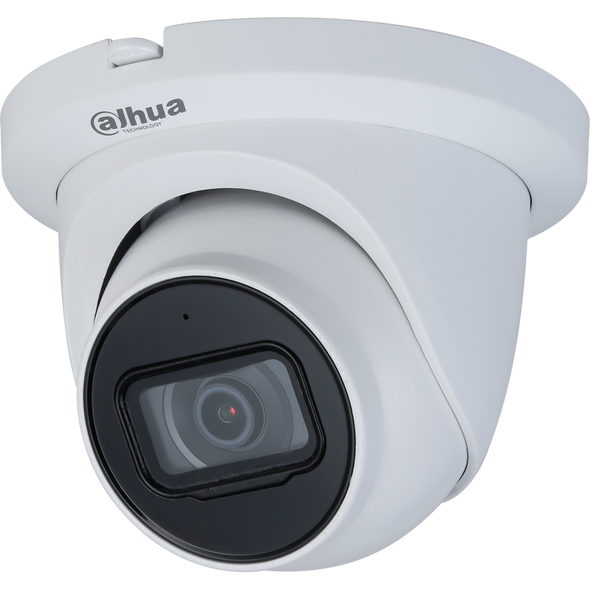
Dahua A22DJ62 2MP Night Vision Outdoor Turret HD-CVI Security Camera, 2.8mm Fixed Lens, Starlight+, Pro Series
Brand: Dahua
Part Number: A22DJ62$93.99$78.00- Field of View (Horizontal) : 109°Field of View
- Max. FPS and Resolution : 30fps at 1080P
- Lens Type : Fixed Lens
- Lens Size : 2.8mm Lens
- Sensor Type : CMOS
- Sensor Size : 1/2.8" Sensor
- Protection Code : IP67
- Color : White
- Material : Metal
- Environmental : Outdoor
- Aperture : F1.6
- Audio Support : Built-in Microphone
$93.99$78.00 -
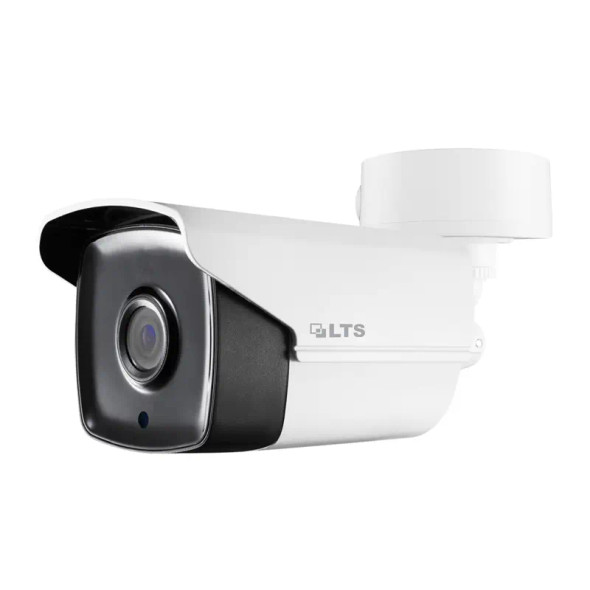
LTS CMHR9222WE-28FN 2MP Night Vision Outdoor Bullet IP Security Camera, Ultra Low Light, 2.8mm Fixed Lens - LTCMHR9222WE-28FN
Brand: LTS Security
Part Number: LTCMHR9222WE-28FN$101.06- Field of View (Horizontal) : 104°Field of View
- Max. FPS and Resolution : 30fps at 1080P
- Lens Type : Fixed Lens
- Lens Size : 2.8mm Lens
- Sensor Type : CMOS
- Protection Code : IP67
- Color : White
- Material : Metal
- Environmental : Outdoor
$101.06 -

Digital Watchdog DWC-MB48WiATW 8MP 4K Night Vision Outdoor Bullet Network IP Security Camera with IVA
Brand: Digital Watchdog
Part Number: DWC-MB48WIATW$1,187.00$876.00- Compression : H.265, H.264, MJPEG,
- Field of View (Horizontal) : 33.1°Field of View 90.3°Field of View
- Max. FPS and Resolution : 30fps at 3840 x 2160 (4K)
- Lens Type : Motorized (Automatic Zoom) Lens
- Lens Size : 2.7~13.5mm Lens
- Sensor Type : CMOS
- Sensor Size : 1/2.8" Sensor
- Video Output : 1x CVBS
- Protection Code : IP67 IK10
- Color : White
- Material : Aluminum
- Environmental : Outdoor
- Aperture : F1.4
$1,187.00$876.00 -

Geovision GV-PDR8800 8MP 4K Night Vision Outdoor Dome IP Security Camera with AI Deep Learning, 1.68mm Fixed Panoramic Lens - 84-PDR880W-0010
Brand: Geovision
Part Number: 84-PDR880W-0010$464.00$426.67- Compression : H.265, H.264, MJPEG,
- Field of View (Horizontal) : 180°Field of View
- Max. FPS and Resolution : 25fps at 3840 x 2160 (4K)
- Lens Type : Fixed Lens
- Lens Size : 1.68mm Lens
- Sensor Type : CMOS
- Sensor Size : 1/2.8" Sensor
- Protection Code : IP67 IK10
- Color : Black
- Material : Metal
- Environmental : Outdoor
- Aperture : F2.0
- Audio Support : Built-in Microphone
$464.00$426.67 -

Hikvision DS-2DY3220IW-DE4 2MP IR Outdoor PTZ Bullet IP Security Camera
Brand: Hikvision
Part Number: DS-2DY3220IW-DE4$1,302.00$1,002.49- Compression : MJPEG, H.264, H.265,
- Field of View (Horizontal) : 58°Field of View 3°Field of View
- Max. FPS and Resolution : 60fps at 1280 x 960
- Lens Type : Motorized (Automatic Zoom) Lens
- Lens Size : 4.7~94mm Lens
- Sensor Type : CMOS
- Sensor Size : 1/2.8" Sensor
- Protection Code : IP66
- Color : White
- Environmental : Outdoor
$1,302.00$1,002.49 -
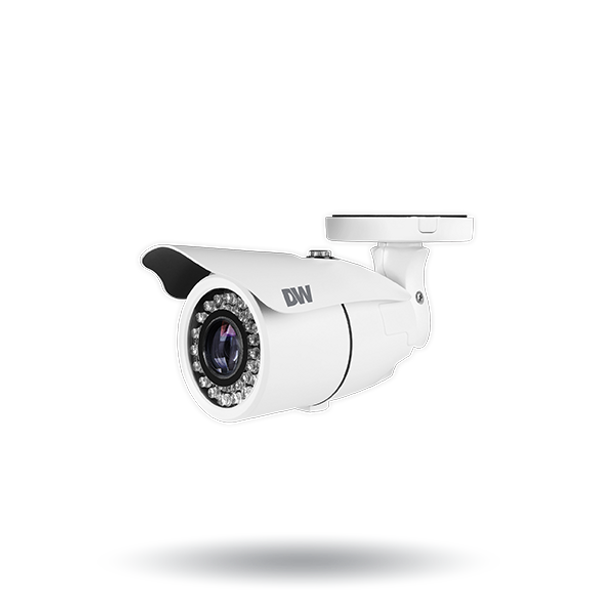
Digital Watchdog DWC-B6883WTIRW 8MP 4K Night Vision Outdoor Bullet HD CCTV Security Camera, 3.6~10mm Motorized Lens
Brand: Digital Watchdog
Part Number: DWC-B6883WTIRW$680.00$499.20- Field of View (Horizontal) : 98.4°Field of View 45.7°Field of View
- Max. FPS and Resolution : 15fps at 3840 x 2160 30fps at 2560 x 1440
- Lens Type : Motorized (Automatic Zoom) Lens
- Lens Size : 3.6~10mm Lens
- Sensor Type : CMOS
- Sensor Size : 1/1.8" Sensor
- Video Output : 1x CVBS 1x BNC
- Protection Code : IP66
- Color : White
- Material : Aluminum
- Environmental : Outdoor
$680.00$499.20 -

Digital Watchdog DWC-B6563WTIRW 5MP 3K Night Vision Outdoor Bullet HD CCTV Security Camera, 2,7~13.5mm Motorized Lens
Brand: Digital Watchdog
Part Number: DWC-B6563WTIRW$413.00$303.20- Field of View (Horizontal) : 102°Field of View 31.4°Field of View
- Max. FPS and Resolution : 20fps at 2592 x 1944
- Lens Type : Motorized (Automatic Zoom) Lens
- Lens Size : 2.7~13.5mm Lens
- Sensor Type : CMOS
- Sensor Size : 1/2.8" Sensor
- Protection Code : IP66
- Color : White
- Material : Aluminum
- Environmental : Outdoor
$413.00$303.20 -

Speco HT7246T2 2MP Outdoor Dome HD-TVI Security Camera with Junction Box, 2.8-12mm Auto Iris Varifocal Lens
Brand: Speco
Part Number: HT7246T2$467.00$204.03- Max. FPS and Resolution : 30fps at 1080P
- Lens Type : Varifocal Lens
- Lens Size : 2.8~12mm Lens
- Sensor Type : CMOS
- Sensor Size : 1/2.9" Sensor
- Video Output : 1x CVBS
- Protection Code : IP67
- Color : Dark Gray
- Environmental : Outdoor
$467.00$204.03 -

Digital Watchdog DWC-MPB48WiATW 8MP 4K Night Vision Outdoor Bullet IP Security Camera with IVA Plus
Brand: Digital Watchdog
Part Number: DWC-MPB48WIATW$1,195.00$956.00- Compression : H.265, H.264, MJPEG,
- Field of View (Horizontal) : 33.1°Field of View 90.3°Field of View
- Max. FPS and Resolution : 30fps at 3840 x 2160 (4K)
- Lens Type : Motorized (Automatic Zoom) Lens
- Lens Size : 2.7~13.5mm Lens
- Sensor Type : CMOS
- Sensor Size : 1/2.8" Sensor
- Video Output : 1x CVBS
- Protection Code : IP67 IK10
- Color : White
- Material : Aluminum
- Environmental : Outdoor
- Aperture : F1.4
$1,195.00$956.00
